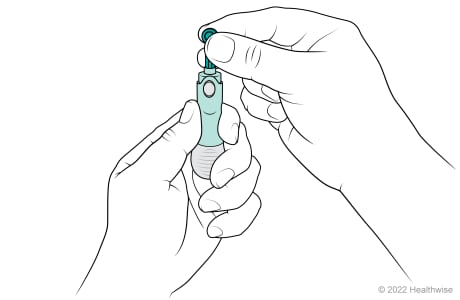How to measure your blood sugar
Gather your supplies.

Gather the things you need to test your blood sugar. This usually includes the meter, needle (lancet) and lancet holder, test strips, and cotton balls.
Learn how to use the equipment.

Read the information from the manufacturer and your doctor to be sure you know how to use the blood sugar meter, lancet holder, and test strips.
Check the expiration date.

Check the expiration date on your test strips. If you use expired test strips, your test results might not be accurate.
Match the code numbers.

Many meters don't need a code from the test strips, but some will. If your meter does, make sure the code number on the bottle of test strips matches the number on your meter. If the numbers don't match, follow the directions that come with your meter for changing the code number.
Wash your hands.

Wash your hands with warm, soapy water, and dry them well with a clean towel.
Put a clean needle (lancet) in the lancet holder.

The lancet holder is about the size of a pen. It holds the lancet in place and controls how deeply the lancet goes into your skin.
Get the test strip ready.

Take one strip from the bottle of test strips. Follow the directions to prepare your meter to receive the blood sample. Don't forget to put the lid back on the bottle right after removing the strip.
Prick your finger.

Use a lancet holder to prick the side of your fingertip with the lancet. You can use a lancet without a holder, but a holder makes it easier to use. You can prick any finger.
Test a small sample of your blood.

Touch the drop of blood with the correct spot of the test strip. Be sure to get enough blood to cover the test area on the strip.
Stop any bleeding.

If your finger continues to bleed, use a clean cotton ball to apply pressure to your fingertip to stop the bleeding.
Record your results.

Wait for the results. Most meters take only a few seconds to give you the results. It's important to record your blood sugar results and when you tested it. It's also helpful to note when you last had something to eat. Your doctor will use your record to see how often your blood sugar levels are in your target range. Some meters will store the results and let you share them with your doctor.
Current as of: April 30, 2024
Author: Ignite Healthwise, LLC Staff
Clinical Review Board
All Ignite Healthwise, LLC education is reviewed by a team that includes physicians, nurses, advanced practitioners, registered dieticians, and other healthcare professionals.

